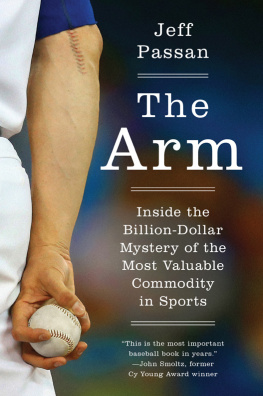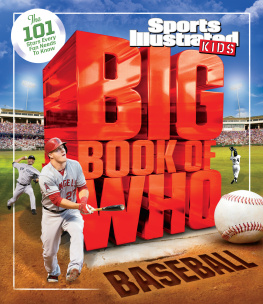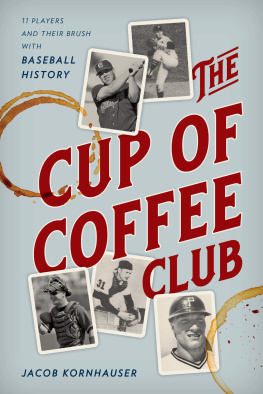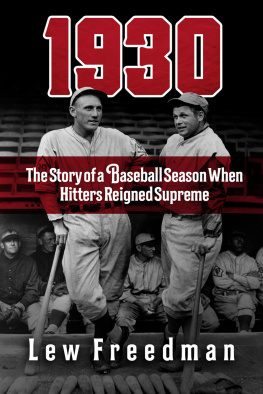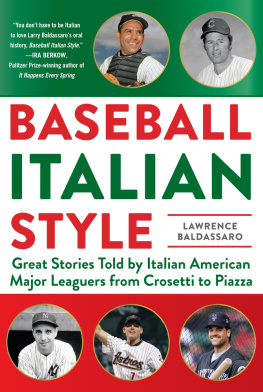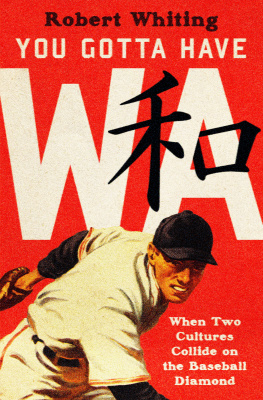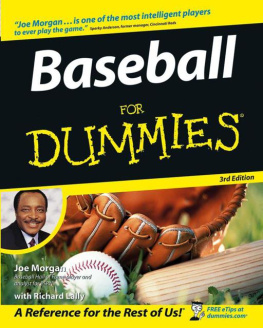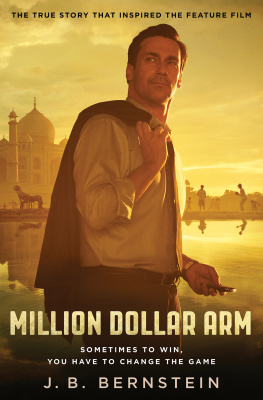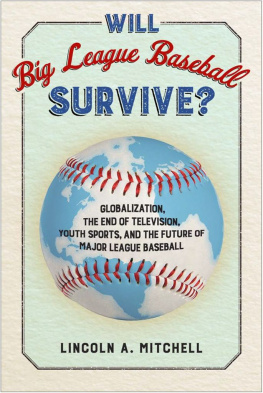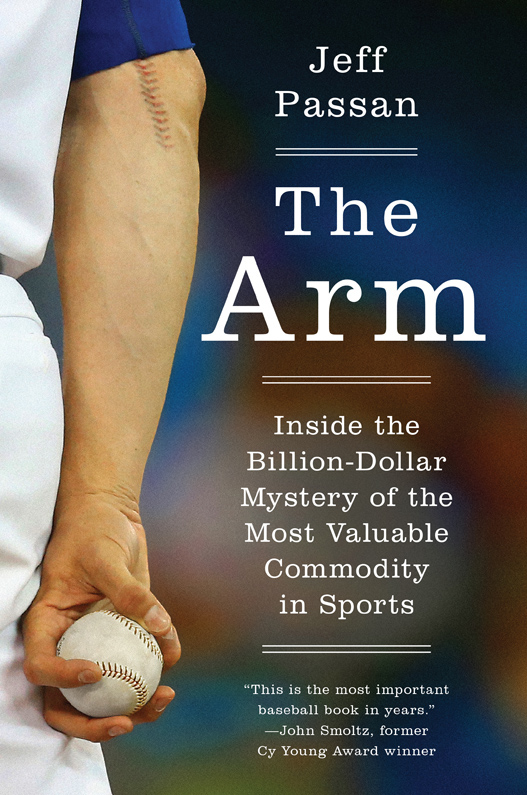FOR RICH, WHO GAVE ME THE BUG.
F OR 130 YEARS, PITCHERS HAVE thrown a baseball overhand, and for 130 years, doing so has hurt them. Starter or reliever, left-handed or right-handed, short or tall, skinny or fat, soft-tossing or hard-throwing, old or youngit matters not who you are, what color your skin is, what country youre from. The ulnar collateral ligament (UCL), a stretchy, triangular band in the elbow that holds together the upper and lower arms, plays no favorites. If you throw a baseball, it can ruin you.
When the UCL breaks, only one fix exists: Tommy John surgery. Over the past decade, the procedure became a frequently uttered curse word as pitcher after pitcher felt the pain of a torn ligament, huffed anesthesia a few days later, and woke up an hour after that with a fresh scar and an exasperating rehabilitation schedule. Some of the biggest names in Major League Baseball needed Tommy John. Even more kids, some barely teenagers, blew out their elbows and underwent surgery. At the highest levels of the game, a panic swelled. Not only were the arms of current pitchers failing, elite players from the next generation were going down before they could sign their first professional contract.
The culture of baseball seemed backward to me. The more I thought about the pervasiveness of Tommy John, the more I understood it needed demystifying. I heard stories of kids getting Tommy John surgery at fourteen years old. (They were true.) And of kids who underwent Tommy John even when they werent hurt, because they thought it would help them throw harder. (Neither the stories nor the implication was true.)
Mostly, I wanted to understand this for my son. He was five years old. He loved baseball. He wanted to play catch every day. He was hooked, like his dad. And the more I heard stories from other parentsof their sons getting hurt or boys they know quitting baseball because their arms no longer workedthe more I needed to figure out what was happening to the arm.
So I spent three years traveling the world to find out. I saw a mad scientist in rural Florida who believes he can fix the arm and a couple of geniuses in Chicago who saw fit to spend more than $150 million on one. I went to Seattle to watch a human being throw a baseball almost 106 miles per hour and to Kansas City to see a teenager flirt with 100. I flew to Arizona to get Sandy Koufaxs opinion on the greatest sports orthopedist ever, asked that orthopedist how he came up with Tommy John surgery in the first place, and learned from Tommy John himself how he once worried that his hand was going to be permanently clawed because of it. I sat in laboratories, saw doctors tend to bodies living and dead, went halfway across the globe to a place where the problem is even greater, read medical studies, and scavenged through data, all to answer two vital questions:
How did baseball fail the pitching arm, and what can be done to save it?
Eventually, I found two pitchers who allowed me to infiltrate their lives at their nadir so I could fully understand what happens when an armand a careerblows up. Daniel Hudson was twenty-five when his UCL burst. He threw differently from most, his arm slot a low three-quarters, his release almost like a slingshot, each pitch stoking the cauldrons fire. Even so, the Arizona Diamondbacks had never bothered tinkering with his mechanics. A pitcher is fine until he isnt. The other pitcher, Todd Coffey, was a right-handed reliever with a personality as big as the scar on his elbow. He needed two Tommy John surgeries, the first when he was nineteen, the next at thirty-one. A study on two-time Tommy John patients showed that the ligament from Coffeys first surgery lasted the longest of any pitcher who needed another surgery. This didnt guarantee his return from the second. Nothing can.
I marveled at Hudsons and Coffeys daily existence, which toggled between triumph and failure. They balanced loneliness and tedium with excitement and redemption. Optimism got into daily head-on collisions with reality. These two men are the faces of every arm. And yet before I tell their stories, its important to understand the arms place in the rest of the baseball world and whats at stake beyond billions of dollars and World Series titles.
The problem is not going away. The sports foremost doctors believe its worsening. The current generation of pitchers is lost, the product of a broken system, their arms ticking time bombs. If that doesnt change, todays kids will be the next casualties. They throw more and harder at younger ages than ever. Do the same thing again and again and again, and no matter how naturallike many things about the arm, the idea that throwing is an unnatural motion is a complete mythit will break.
I dont want that to be my son. I dont want that to be your son. Baseball knows it needs top-to-bottom change. The $1.5 billion Major League Baseball spends annually on pitchers salaries is five times more than the combined cost of every starting quarterback in the NFL. It exceeds the top two hundred NBA salaries put together. When I call the pitching arm the most valuable commodity in sports, it is not an exaggeration. And yet the most overanalyzed sport in the world, with an industry of bright minds studying its intricacies, loses half a billion dollars a year to injuries. More than 50 percent of pitchers end up on the disabled list every season, on average for two monthsplus, and one-quarter of major league pitchers today wear a zipper scar from Tommy John surgery along their elbows.
People in the sport call arm injuries an epidemic. Solutions do exist. They arent easy, and theyll take the sort of overhaul baseball seems loath to implement, but they can happen. Because one thing I now know is that for all of its travails, all the heartache it can cause, all the frustration left in its wake, the arm is capable of wondrous things.
H E DIDNT WANT A PIECE of the dead guy holding his elbow together. Thats all he asked.
Todd Coffey had resigned himself to spending the next year learning how to throw a baseball again. He had accepted the mind-numbing rehabilitation process after tearing his ulnar collateral ligament, the two-inch elastic band that had prevented the upper and lower bones of his right arm from flying apart when he pitched. He simply couldnt stomach the new ligament coming from someplace other than his own body. I think about it as a used car that has 40,000 miles on it, Coffey said. You dont know what the previous 40,000 miles were like. I dont know what its been through.
He had spent his entire adulthood in baseball. Got married, had kids, fought his way to the major leagues, made his first million and a few more, played the hero and the goat. Now his elbow had popped, and it was fix it or be done. He was used to binary outcomes after spending nearly half his life as a relief pitcher. Ball or strike. Win or loss. Save the game or blow it. He knew nothing else. He didnt want to know anything else. And here he was, at thirty-one, with that career, that life, at risk, and the doctor wanted to reconstruct his elbow with a dead mans tissue because Coffeys own body didnt have any to spare.
On July 17, 2012, Coffey slid into an MRI tube at the Kerlan-Jobe Orthopaedic Clinic in Los Angeles. The next day he was scheduled to undergo Tommy John surgery, the procedure that revolutionized baseball in 1974, when Dr. Frank Jobe used a tendon from the wrist of John, a left-handed pitcher, to replace his torn elbow ligament. At the time, Jobe said it had a 1 percent chance of success. In the forty years since, the procedure has saved nearly one thousand professional players careers, including that of Todd Coffey. It had given Coffey everything, and now it was threatening to take it away. Coffey was a well-traveled reliever, having bounced from Cincinnati to Milwaukee to Washington to Los Angeles, and now to Dr. Neal ElAttraches operating room.

